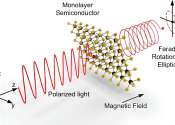International team detects eruption of mega-magnetic star in nearby galaxy
While ESA's satellite INTEGRAL was observing the sky, it spotted a burst of gamma-rays—high-energy photons—coming from the nearby galaxy M82. Only a few hours later, ESA's XMM-Newton X-ray space telescope searched for ...









